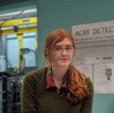

Showing 1241 - 1260 of 1520 results


Role at ANSTO
Accelerator Operator.

Dr Karin Soldenhoff is a Principal Consultant within ANSTO's minerals area, managing the process development and research groups.

Miodrag Jovanovic or ‘Mike’ as more commonly known has been with ANSTO for more the 20 years.

Role at ANSTO:

Role at ANSTO

Profile
Window into the cell
Access to a ‘window into the cell’ with University of Wollongong cryogenic electron microscope at ANSTO.
2020 Shorebirds Competition Summary and Results
Primary students across Australia were invited to create a public awareness poster for a threatened shorebird found in Australia for our 2020 Shorebirds Competition. In response to COVID-19, and the changes to children’s learning environments, we opened the competition early and also included categories for individual children to enter, as well as school children.
Scientific ingenuity at work
Contributing to research that strengthens the defence of Australia
Capabilities
ANSTO provides access to specialised facilities and capabilities by application. Please ensure that you contact the relevant ANSTO scientist for advice before submitting a proposal.

Work Health and Safety
ANSTO operates Work Health and Safety and Environmental Management Systems designed to ensure the safety of its employees, partners and members of the public to minimise the impact of our activities on the environment.

Role at ANSTO
Role at ANSTO
Australian access to overseas synchrotrons
The International Synchrotron Access Program (ISAP) is administered by the Australian Synchrotron and is designed to assist Australian-based synchrotron users to access overseas synchrotron related facilities.

Role at ANSTO


Role at ANSTO

